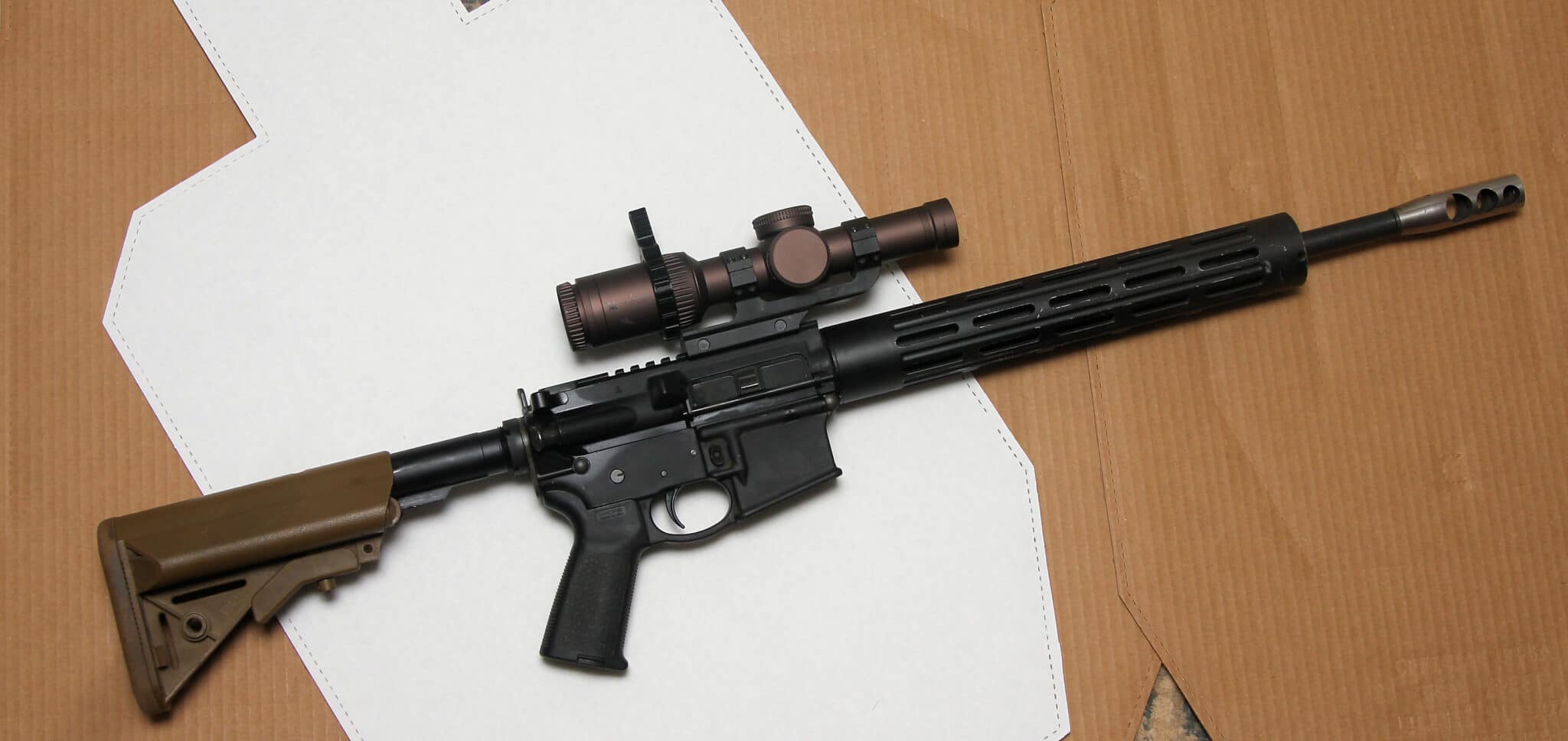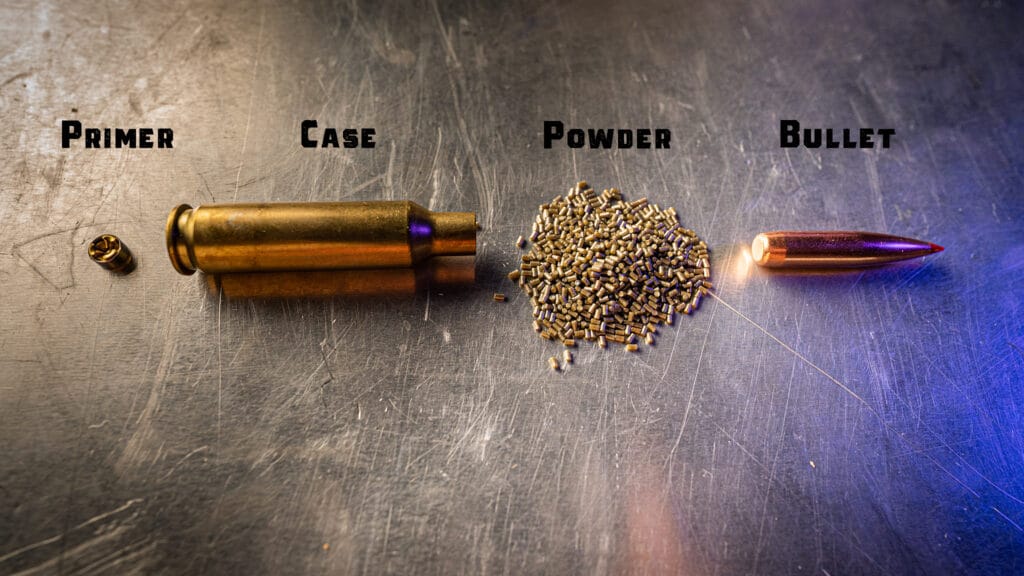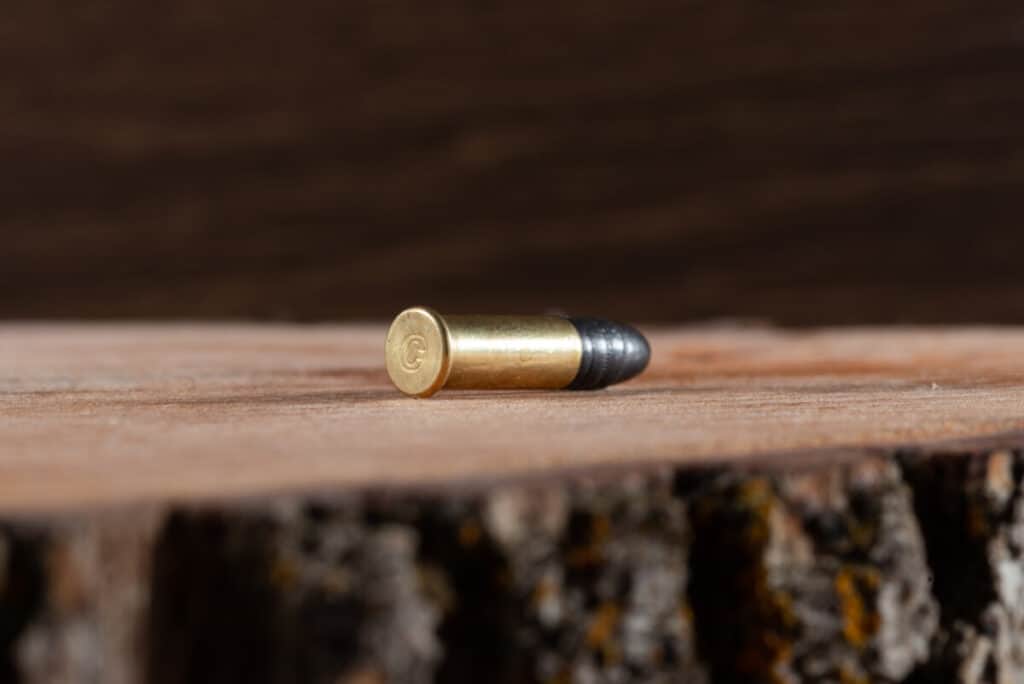Is the AR-15 Rimfire or Centerfire? A simple explanation

In 1956, the AR-15 was designed by a team of engineers led by the late Eugene Stoner. It was a downsized variant of the AR-10, which had been previously submitted for military trials. The AR-15, for most of its life, has been chambered in either the .223 Remington or 5.56x45mm.
The AR-15 was designed to shoot centerfire cartridges. While in recent years there have been conversion kits that allow it to shoot rimfire ammunition, this was not part of the original intent for the rifle.
The AR-15 has been widely adapted to fill roles outside of its original use. Just because it was meant to be a lightweight rifle that shoots small-caliber bullets at high speeds doesn’t mean it can’t be used for other things.
The Original Design
In World War 2, the standard service rifle was the M1 Garand. It shoots a powerful cartridge, holds 8 shots in an internal magazine, and weighs a whopping 9.5 pounds. While unquestionably lethal, it’s big and has significant recoil.
There was also the M1 Carbine, which is smaller, lighter, and has a higher capacity. It also recoils much less shooting the .30 Carbine, but that cartridge lacks the range and lethality of the 30-06 used by the M1 Garand.
When the US military wanted something more efficient than the M1 Garand, the AR-10 was developed and submitted to military testing. It was chambered in 7.62x51mm, which is the military’s version of the modern .308 Winchester. It also uses plastics and aluminum to reduce the overall weight of the rifle.
One of the two provided samples had a catastrophic failure during testing and the AR-10 faded into obscurity. The AR-15 was then developed as an even smaller and lighter version of the rifle and was chambered in .222 Remington.
To make the AR-15 more powerful, it was quickly modified to shoot the new .223 Remington cartridge. And, when the AR-15 was adopted for military use as the M16, it gained another velocity boost by being chambered in the 5.56x45mm.

Centerfire vs Rimfire
All of the above-listed cartridges are centerfire. A centerfire cartridge is designed around having a self-contained primer inserted into the base of the brass casing. This primer, when struck by the firing pin of the firearm, created a small explosion that ignites the powder charge in the brass case.
Although not important to everyone, after the cartridge is fired the brass casing can be processed and used again in reloaded ammunition. Because the primer is a separate part, it can be removed and a new primer can replace it.
A rimfire cartridge is designed around the primer being an internal part of the cartridge case. Some will argue a rimfire doesn’t have a primer, just a priming compound at the base of the brass. Whichever is the correct technical answer, the outcome is the same.
When fired, the firing pin of the firearm strikes the rim at the base of the cartridge. This is where the name rimfire originates from. Functionally, the priming compound then creates the same small explosion to ignite the powder charge that propels the bullet out of the firearm.
Because the case is dented in the process, rimfire cartridges aren’t reloaded.

Practical Differences Between Centerfire and Rimfire
When it comes to modern ammunition, there is very little overlap between what people use centerfire cartridges for and what they use rimfire cartridges for. It doesn’t necessarily need to be this way, but it makes complete sense for 99%+ of shooters.
Centerfire cartridges are universally considered to be more reliable. The self-contained primer is just a better way to ignite a powder charge and shoot a bullet. Because of this, cartridges meant to be used for self-defense are almost exclusively centerfire.
All the modernly used cartridges that can be considered “powerful” are also centerfires. This means centerfire cartridges dominate big game hunting as well.
To be clear, there are people who use rimfire cartridges for both big-game hunting and self-defense, but it is far from being considered a best practice. Many states have made hunting big game with rimfire cartridges illegal due to concerns about rimfires not humanely killing animals without perfect shot placement.
The .22 Long Rifle, commonly abbreviated to .22 LR, is the most popular rimfire cartridge by a country mile. Because of the cost-saving associated with manufacturing rimfire cartridges, the .22 LR is popular for people who want to shoot a lot on a budget.
Also, because any rifle or handgun chambered in .22 LR has very modest recoil, they are popular training pistols for youths and new shooters.
The other popular rimfire cartridges, like the .22 WMR (Winchester Magnum Rimfire) and .17 HMR (Hornady Magnum Rimfire) try to offer a little more power without encroaching on .22 caliber centerfire cartridges.
Getting Back to the AR-15
While the AR-15 was designed to shoot centerfire cartridges, it doesn’t mean it absolutely needs to. There are conversion kits that adapt it to use .22 LR ammunition. The most popular is the kit made by CMMG, and I have seen several people use these kits.
The people who I have spoken to about using this conversion are generally happy with the results. An AR-15 converted to .22 LR won’t have the same reliability as before, but since they are being used for casual shooting, AKA “plinking”, it isn’t a big deal.
Some people also will buy an AR-22 style rifle, which is a rimfire rifle meant to mimic the handling and controls on an AR-15. Unless purchasing firearms is restricted in your location, I generally recommend an AR-22 over an AR-15 conversion kit.
It has been my experience that an AR-22 will be more reliable than a converted AR-15.

What Should you Choose?
Your choice should be based entirely on your needs. If you plan to use an AR-15 for self-defense, centerfire is the only logical choice. If you plan to use it for hunting, you will most likely want to shoot a centerfire cartridge too. The exception would be close-range hunting of very small animals like rodents.
If you are looking to save money while shooting recreationally, a converted AR-15 or an AR-22 could be an excellent choice. The same goes if you want to teach new shooters about firearms handling with minimal recoil and muzzle blast.
